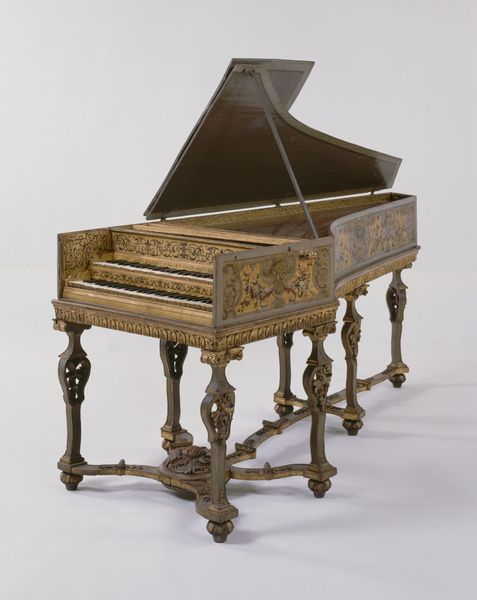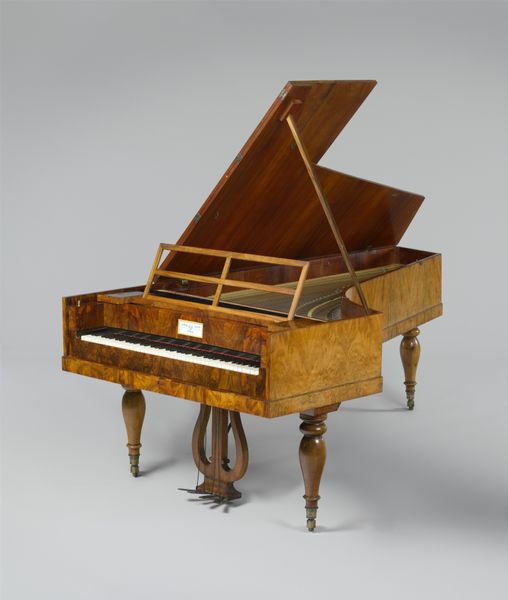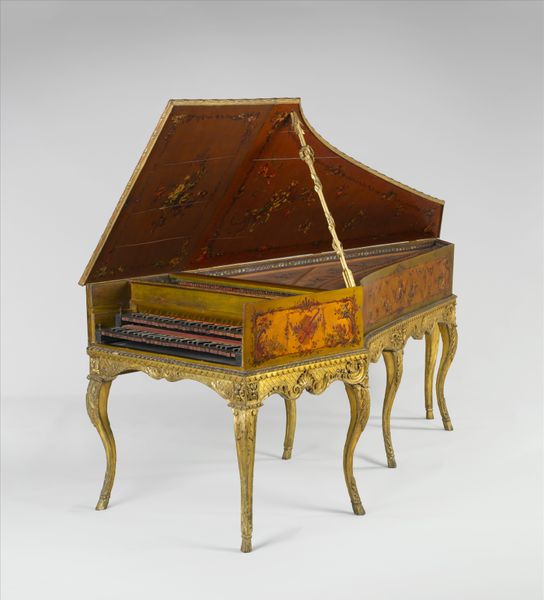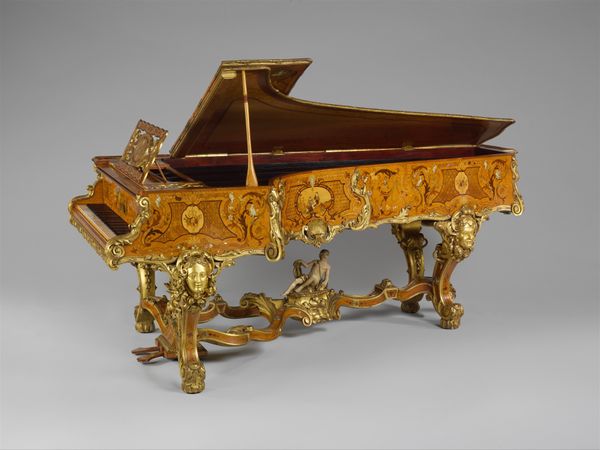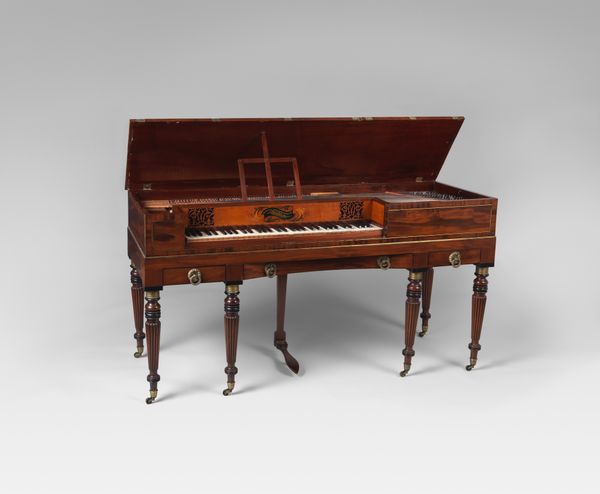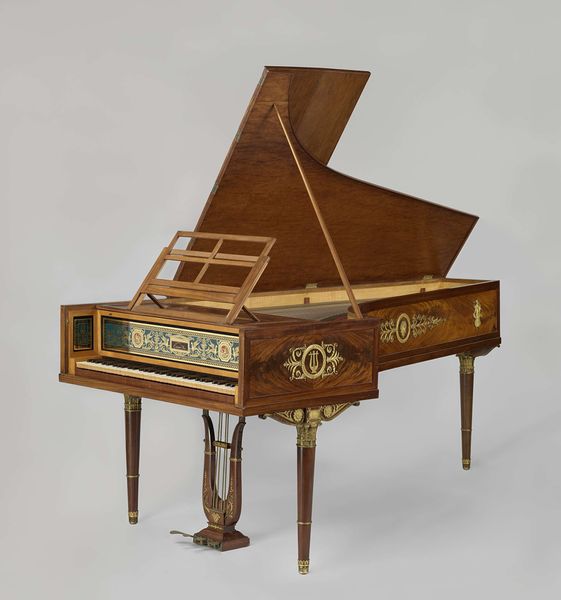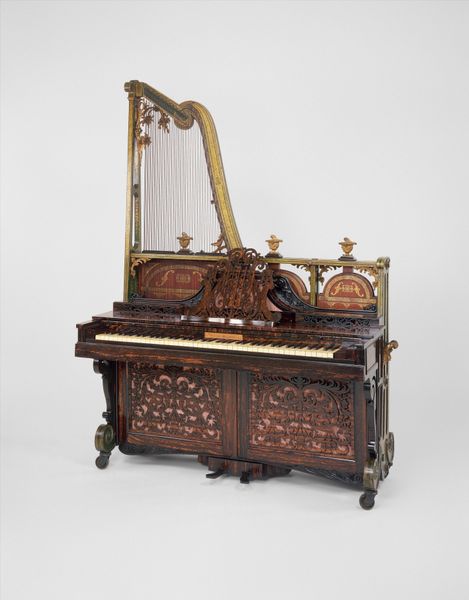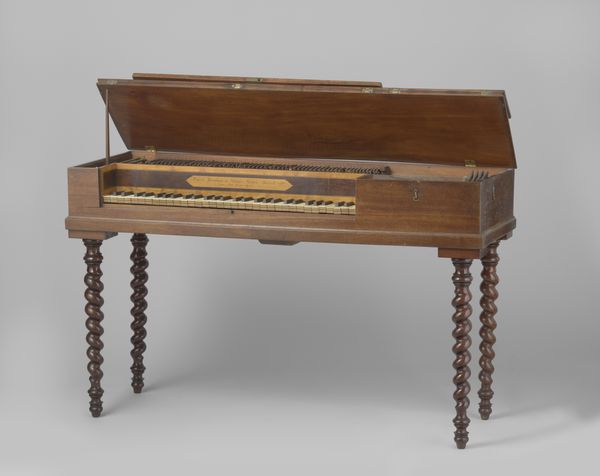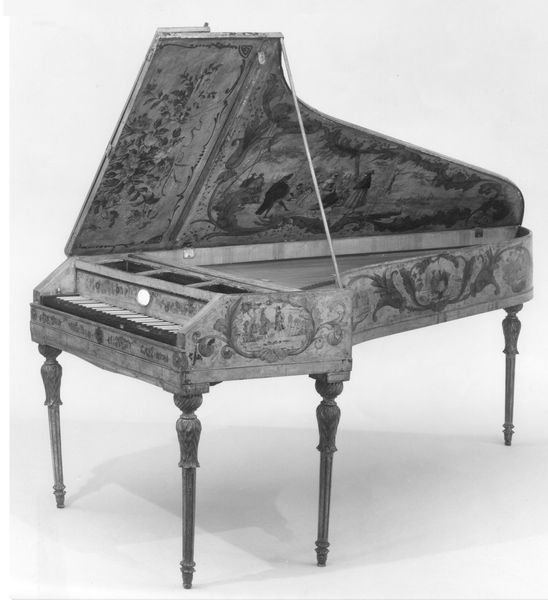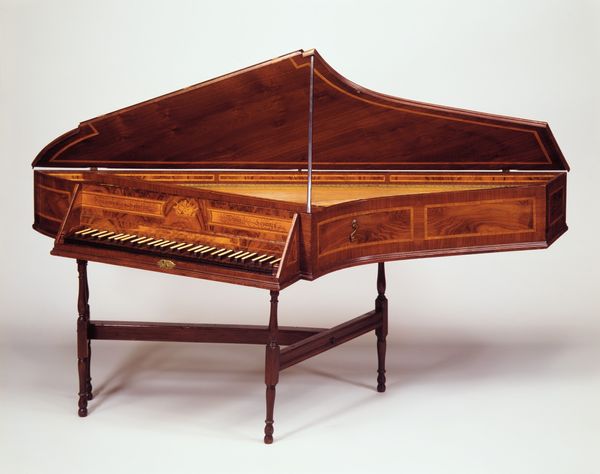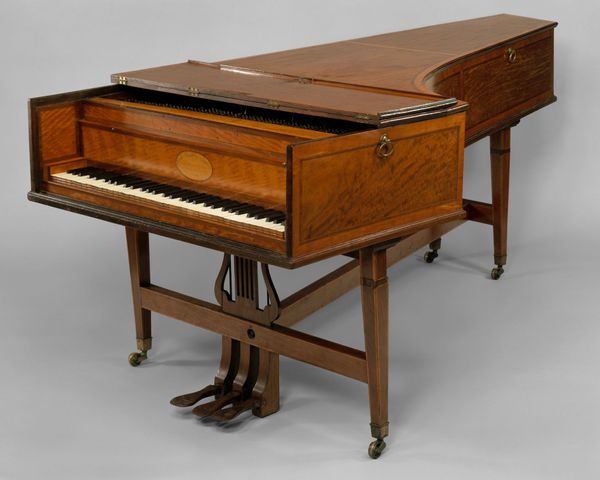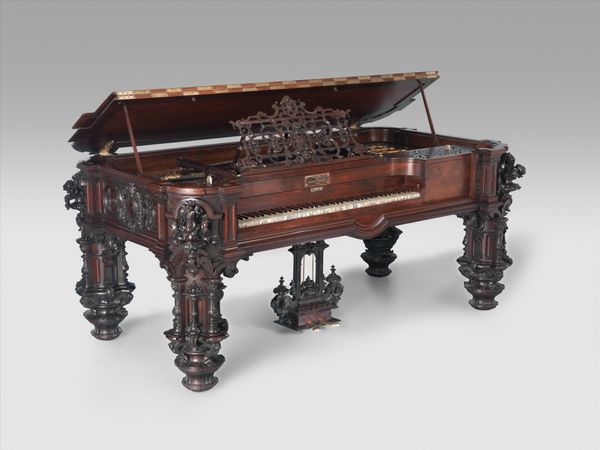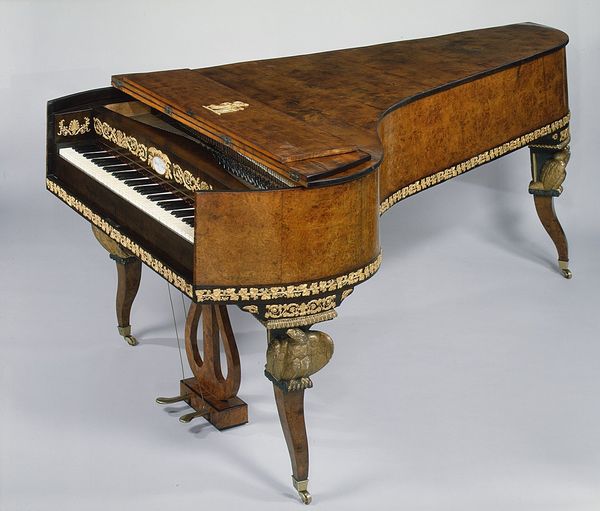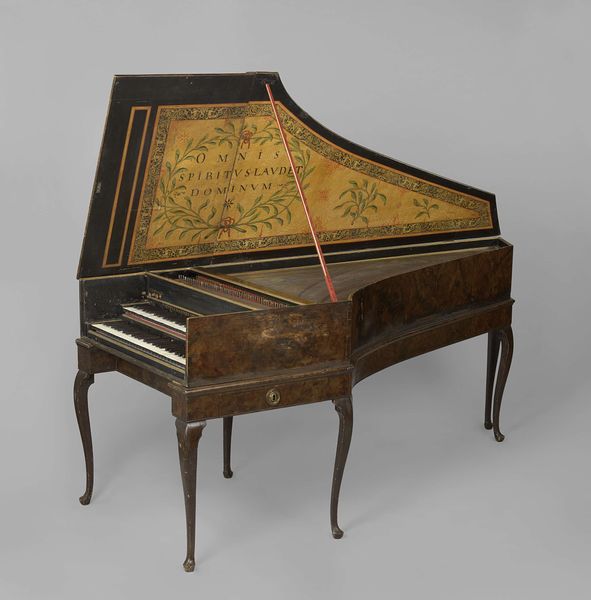
wood
#
portrait
#
baroque
#
wood
#
musical-instrument
#
decorative-art
Dimensions: L. 243cm W. 91cm D. 27cm front legs: 90cm x 25.5cm x 66cm back legs: 26cm x 26cm x 67cm
Copyright: Public Domain
Curator: Here we have a Harpsichord, crafted around 1666 by Girolamo Zenti. You can find it here at the Metropolitan Museum of Art. Editor: Wow, it's imposing! Not just visually, but also in its weight. Look at the robust carved wood, it's meant to project both wealth and sonority. Curator: Indeed, the use of wood is central to its social purpose, the harpsichord acted as a status symbol. Owning such an ornate instrument advertised not just wealth but also cultivated artistic sensibilities. Aristocratic display at its finest. Editor: Let's consider the process of its construction. The woodworking and intricate surface decoration, these speak volumes about artisanal labor in the 17th century. The material and the craftsmanship involved would have required significant resources and expertise. It represents a real concentration of skilled labor and imported material, such as ebony. Curator: Precisely. Zenti catered to an elite clientele who viewed the object as a marker of distinction. It would have shaped the environment and the cultural habits within aristocratic homes. What kind of music would fill a room with this piece at its heart? Editor: Well, considering the period, baroque composition obviously. What interests me are the resonances and the experience the performer had with their instrument—the intimacy, how they developed expertise through this connection with the materiality. Curator: A perfect picture of luxury and power of patronage from the era; it is as if we hear the echoes of performances of courtly society itself through Zenti's decorative techniques and material. Editor: Exactly. Analyzing the object this way reminds us that even seemingly decorative objects can provide invaluable perspectives of cultural production. Curator: What an apt demonstration of an instrument becoming more than just its function, but part of a grand social statement. Editor: It’s not only a remarkable specimen but also shows an interesting meeting of artistry and instrument making.
Comments
No comments
Be the first to comment and join the conversation on the ultimate creative platform.
